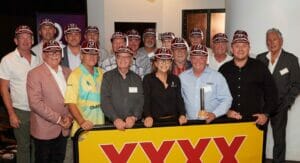 There’s a political stunt that you might have seen. It involves a federal politician asking the interviewer for $100. The politician then takes the $100 and hands the interviewer a $2 coin, saying, here are your community contributions from gaming machines in clubs and pubs.
There’s a political stunt that you might have seen. It involves a federal politician asking the interviewer for $100. The politician then takes the $100 and hands the interviewer a $2 coin, saying, here are your community contributions from gaming machines in clubs and pubs.
Clubs and pubs aren’t like most charities. Charities often rely on Federal Government funding and donations which are then spent on operational overheads and on delivering worthwhile programs. In other words, charities like this don’t conduct business operations, generate surpluses that are then used to fund charitable causes. They take grants and sponsorships, by-pass the business operations, and go straight to delivering programs.
Clubs and pubs are different. They must conduct business in a competitive environment (with other clubs, hotels, casinos, bars, restaurants and cafes), make a surplus, invest capital, and provide community contributions from what is left over.
This is how clubs and to a less extent, pubs work. Generally, larger clubs generate around $64 out of every $100 from poker machines. $17 of every $100 are generated in food, $16 in beverages and $3 from other areas, including memberships and commissions.
Then there are the operating costs. The largest single operating costs is the cost of labour, accounting for almost $22 in every $100 spent in a club. Then there’s gaming machine taxes (in addition to the GST generated), that account for $15 to $16 of every $100 spent in a club.
The food items and beverages that are sold for a margin account for around $12 in every $100 spent in a club. And so on … with total unavoidable operating costs amounting to just over $81 in every $100 spent in a club. That leaves only $19 as a cash trading surplus.
But then clubs have to replace capital items, like carpets, tables, chairs, kitchen equipment and of course poker machines, a cost represented by depreciation. For most larger venues, depreciation costs are around $8 out of every $100 in revenue. Add to that the interest costs that most have to meet on borrowings from banks to establish facilities and pay for capital items like courtesy buses of around $2 to $3 and company taxes that some clubs pay and what’s left isn’t significant. In fact, it’s about $7 out of every $100. Larger clubs record community expenditure at around $2.5 to $3 out of the $7 remaining. But most financial statements that we see often under-scores the real community contributions from clubs too, because clubs haven’t been big on bragging.
So when you see the political stunt again, you’ll know the real facts rather than the “alternative facts” that clubs contribute around 50% of surpluses to the community.
 For further information, contact Paul at paul@dws.net.au or on (07) 3878 9355.
For further information, contact Paul at paul@dws.net.au or on (07) 3878 9355.



